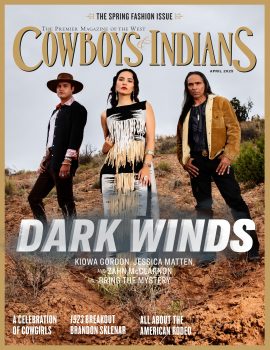Before devoting his life to Edward Curtis’ work, Christopher Cardozo followed his own destined photographic path among indigenous people in Mexico.
How Christopher Cardozo ended up being held at knife- and gunpoint in an extremely remote southern Mexican village in the 1970s, lived to tell the tale, and how he went on to become the world’s foremost expert on Edward Curtis is an awfully interesting story.
Cardozo, who turns 71 in late February, has authored nine books on Curtis, amassed the world’s largest collection of his work, and curated more than 100 exhibitions seen in more than 40 countries. He and a staff of 12 recently completed a nearly five-year, 40,000-hour project to republish all 20 volumes and 20 portfolios of Curtis’ landmark The North American Indian. Cardozo is now immersed in an effort to repatriate Curtis’ work to tribal colleges and cultural centers, and he has already placed more than 1,000 prints and over 300 limited edition books and portfolios with Native individuals and institutions. Ultimately, he hopes to establish a permanent center for his massive Curtis collection, perhaps at the University of Minnesota.
These are some of the tangible results of a karmic connection Cardozo has felt with Curtis and Native people for nearly five decades. He never would have set foot on the Curtis path had his hippie inclinations and love of photography not collided with his life’s calling in the early 1970s. At the time, Cardozo had never even heard of Edward Curtis. A freshly minted graduate with a degree in photography and film from the University of Minnesota, he’d taken a professor up on an invitation to go to Mexico to make a film together. “It took me five months to save up enough to buy a 10-year-old VW Beetle, extra lenses, and lots of film,” Cardozo says. “It was an exhausting 75-hour drive.
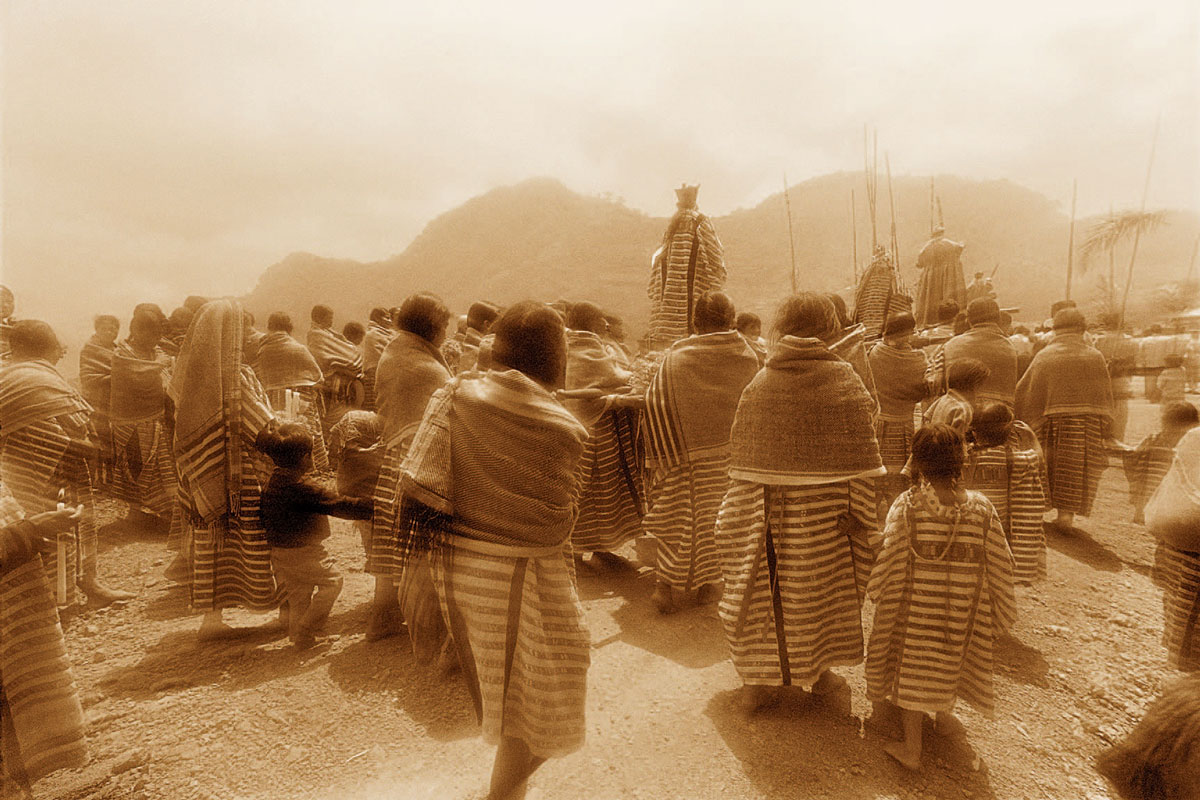
Easter procession, 1973.
When I finally found the little Oaxacan mountain town where my professor lived and knocked on the door, he appeared and said, ‘Oh, Chris, I should have written you. I decided not to make the film.’ What initially felt like an utter disaster turned out to be one of the best things that had ever happened to me.”
Cardozo decided to stay in Mexico anyway and document the isolated Trique Indian tribe in what would become a series of striking sepia-toned prints and film. The prints have been widely exhibited and are found in various collections, including MoMA. In a little Trique village at the ridge of the Sierra Madres, at about 9,000 feet elevation, he saw things with the eyes of a true “beginner” and met people who had never seen a Caucasian before.
“I grew up in an upper-middle-class family and attended a boys military school in Minnesota,” Cardozo says. “Being in this tiny, isolated village was like being beamed into another reality and another century.”
Over the centuries, the Trique had been pushed out of the verdant lands on the Pacific Coast to the rugged, inhospitable mountaintops. The high mountain terrain was marked with deep valleys on all sides. Driving up to the remote village in his Volkswagen, Cardozo encountered the most impoverished community in all of Mexico. “The infant mortality rate was 50 percent. Alcoholism was rampant, as was hepatitis. The life expectancy was 32 years. The average income for a family of four was $194 a year, which was primarily the value of the corn they were able to raise.”
Cardozo could not have been further from his original photographic impulse at age 17, when he bought a tiny Minox spy camera to impress girls.
The Trique very rarely saw foreigners and were deeply suspicious of outsiders. “I was incredibly naive. I didn’t realize how dangerous it was,” Cardozo says. Luckily, an American doctor had been living in the village studying indigenous disease, and though he was wrapping up his work in a week, there was enough time to get Cardozo situated. The doctor introduced Cardozo to the one prominent family in the village, and they took him under their wing and provided a great deal of protection. “Had I come a week later, without an introduction, it would have been too difficult to stay.”
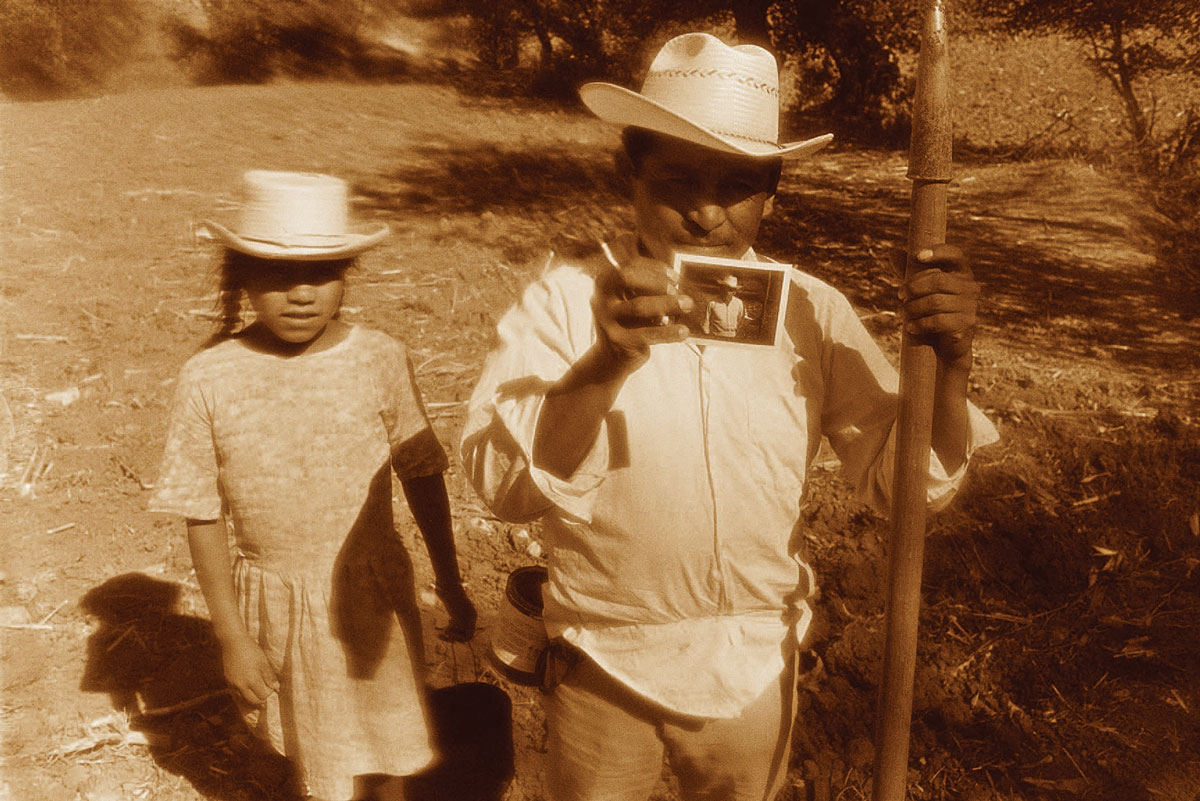
Man and daughter working their field, 1973.
Living in an abandoned missionary’s house, Cardozo began a four-month project of photographing the villagers six days a week, eight to 12 hours a day, then driving to his professor’s town to shower and re-provision on the seventh. (“I survived on peanut butter and crackers,” he says.) But there was a rub: “If I was in the immediate area of the village, I was safe because people assumed I was a doctor. In fact, women would literally walk two or three days, with a sick or dying child, to see me. Sadly, I couldn’t help them the first year, but on my second trip the following year, I brought throat lozenges, aspirin, and other simple things, hoping for at least a placebo effect. It was a wrenching experience that I will never forget.”
And there were other issues: “My Spanish was almost nonexistent, and beyond the village, people often didn’t even speak Spanish. I would occasionally go walking on footpaths for a couple of miles, which I was expressly warned against doing. Within a quarter mile of the village I was known and relatively safe. Beyond that, I was really on my own.” Held at knife- and gunpoint on several occasions, he resorted to sign language — and Polaroids. “If I could produce a Polaroid of people who were suspicious of me and somehow communicate that I only wanted to take photographs, it would get me out of all sorts of potential trouble.”
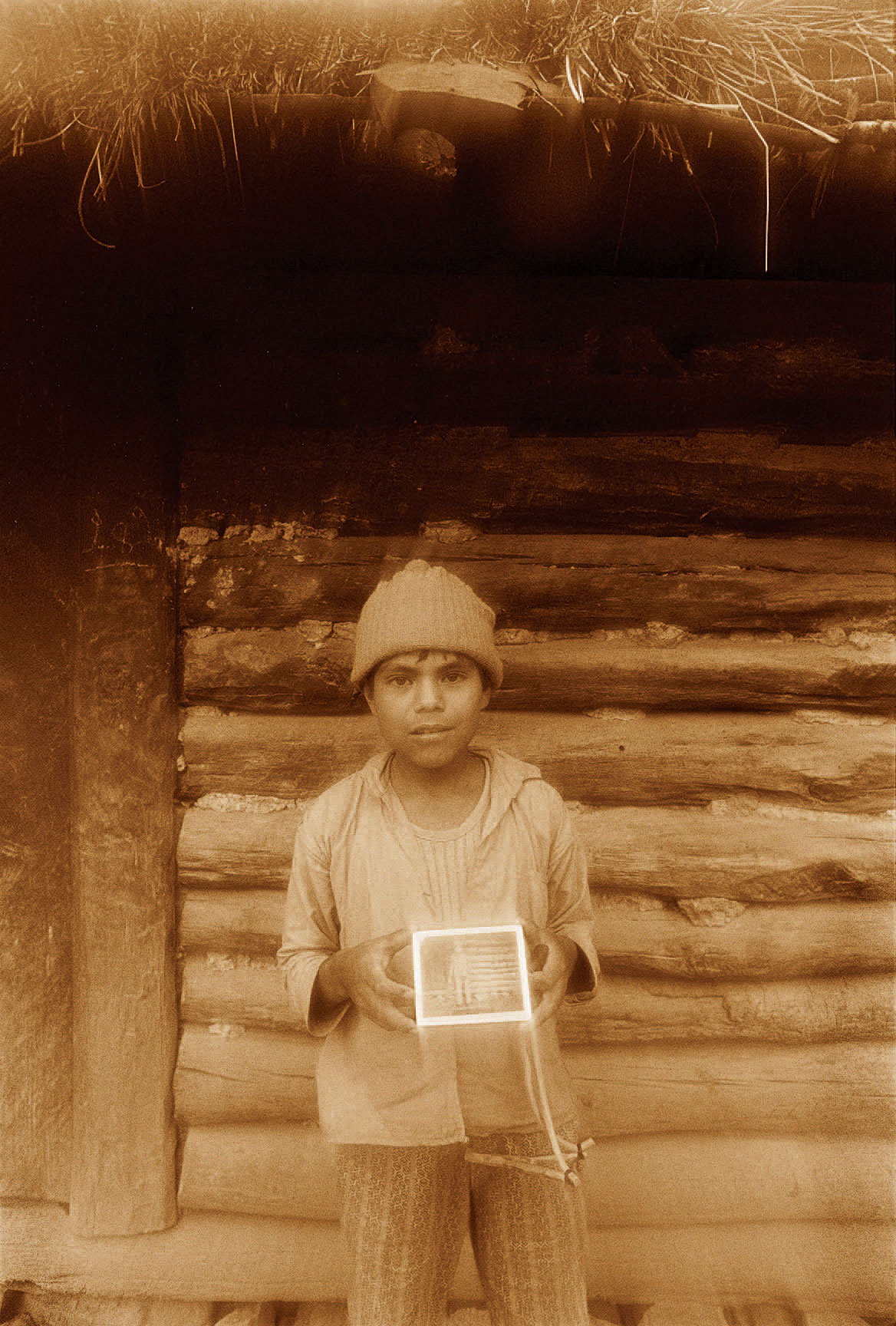
Proud boy with his first photograph, 1973.
He saw both abject poverty and raw beauty. “I would sit on the mountaintop and see women coming and going in their traditional clothing — bright red hand-woven huipils. I would watch people digging in their hardscrabble fields with the most primitive tools and weaving huipils and mats. I could wander to the weekly market that amounted to not much more than a few women who’d come with a few eggs or potatoes or baskets. Every day there were these amazing scenes unfolding. I got to know individuals and got to photograph their lives. There was no indoor plumbing, and electricity was virtually nonexistent. It was like nothing else I had ever experienced.”
Back in the village on his second trip in 1973 for another four months of photography, Cardozo wasn’t able to live in the former missionary’s house, which two neighboring families were fighting over.
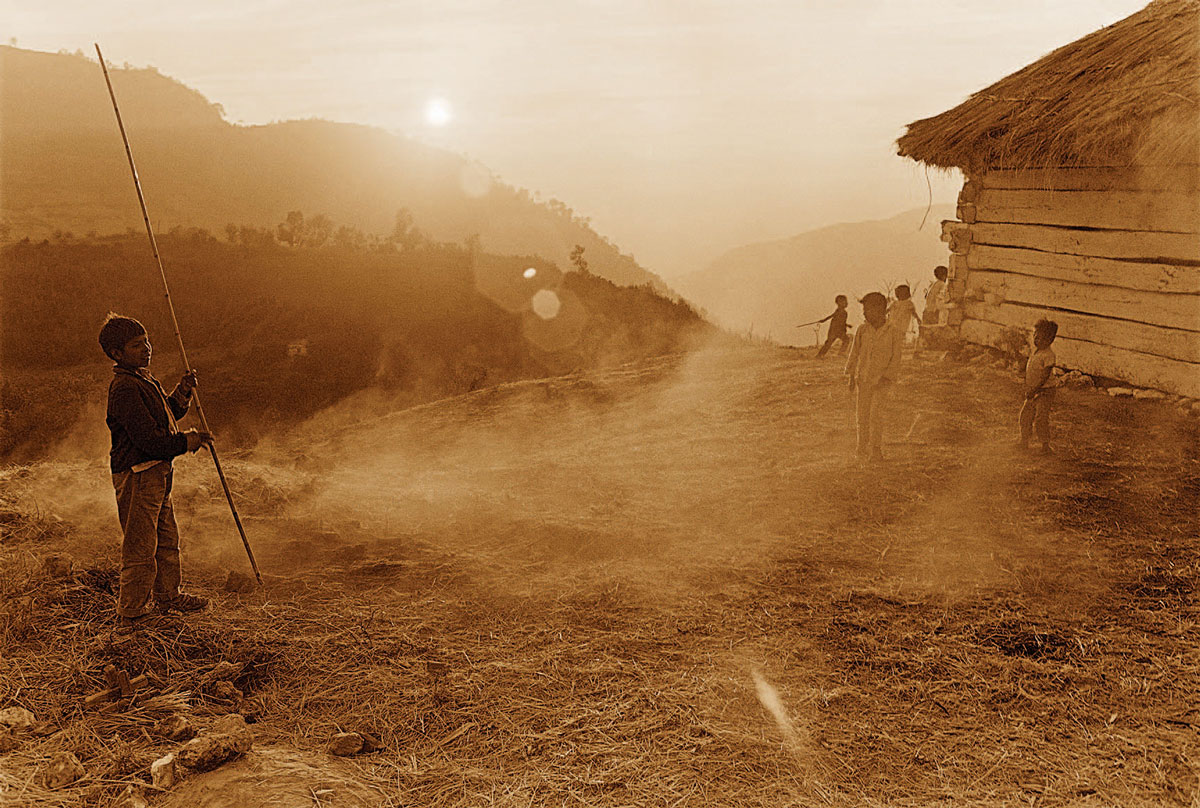
Village scene, 1972.
“I took the back of the passenger seat out of my VW and put an air mattress in and slept there every night,” he says. “It often got down to freezing at night. I would wake up in my sleeping bag to the sight of four to eight kids with their faces glued to the windows of my car to try to figure out what in the world was going on.”
Forty-five years later, Cardozo is still transported by that singular experience and continues to marvel at the syncronicity that would soon lead to his lifelong affinity with Edward Curtis.
Returning to the United States with long hair, a very full beard, and about 5,000 negatives, film footage, sound recordings of language and music, and textiles and other material culture, Cardozo was still unaware of Curtis. But the similarities between their ethnographic endeavors were uncanny, and within two days, when a friend in New Mexico saw what Cardozo had created among the Trique, she insisted they drive 20 miles to a bookstore where a book on Curtis was on view.
“It was as transformative a moment as I’ve ever had in my life,” Cardozo says. The next day in Boulder, Colorado, broke as he was, he used his father’s “emergency” credit card to buy a couple of Curtis prints. “It clearly was an emergency of the heart,” Cardozo says.
It was a seemingly fated introduction. Where the photographic road diverged, Cardozo took the Curtis trail. And that has made all the difference.
The Schumacher Gallery at Capital University in Columbus, Ohio, will host a concurrent showing of vintage Edward Curtis photographs and Christopher Cardozo’s images of the Trique Indian village in the Sierra Madres of southern Mexico. Edward S. Curtis: Beauty, Heart, and Spirit and Something Has Been Revealed: Photographs From San Andres Chicauaxtla Oaxaca, Mexico, circa 1972 are on view January 21 – March 30. edwardcurtis.com, capital.edu/schumacher
From the February/March 2019 issue.













